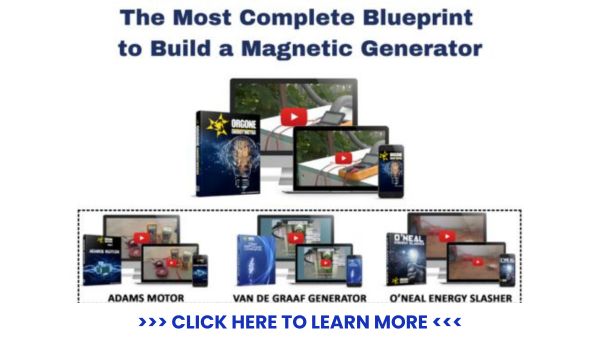5 Steps to Restore Residual Magnetism in Your Generator
You know what they say: ‘A stitch in time saves nine.’ When it comes to your generator, restoring residual magnetism is the key to avoiding potential issues and ensuring optimal performance. But how exactly do you go about it? In this discussion, we will explore the five essential steps that will guide you through the process of how to restore residual magnetism in your generator.
From checking for residual magnetism to testing the generator output, these steps will provide you with the knowledge and tools necessary to restore your generator’s functionality. So, if you’re curious about how to bring your generator back to life, keep reading to discover the secrets of restoring residual magnetism.
Key Takeaways
- Measure voltage across exciter field leads to check for residual magnetism.
- Disconnect power supply before attempting to restore magnetism.
- Use a 12-volt battery to restore magnetism if the generator fails to produce electricity.
- Reconnect power supply gradually and monitor generator’s performance during reconnection.
Check for Residual Magnetism
To check for residual magnetism in your generator, use a voltmeter to measure the voltage across the exciter field leads. This step is crucial in determining whether your generator has sufficient residual magnetism or if it needs to be restored.
Residual magnetism plays a vital role in the generator’s functionality as it helps build the initial magnetic field necessary for generating electricity. A reading of around 2 to 10 volts indicates that there’s enough residual magnetism present. However, if the voltmeter shows zero volts, it suggests a loss of residual magnetism that needs to be restored.
Confirming the presence of residual magnetism is essential before proceeding to restore it. By checking the voltage across the exciter field leads, you can ensure the effectiveness of the subsequent steps to restore residual magnetism and liberate your generator’s full potential.
Disconnect Power Supply
Before proceeding with the restoration of residual magnetism in your generator, it’s imperative to disconnect the power supply to ensure your safety and prevent any potential damage to the generator components.
By disconnecting the power supply, you eliminate the risk of accidental electrocution and safeguard the integrity of the generator. This precautionary measure is crucial to avoid electrical hazards while working on the generator.
Additionally, disconnecting the power supply helps you avoid unexpected power surges that could occur during the restoration process. Ensuring the power supply is disconnected is a necessary step to successfully restore residual magnetism in your generator.
Use a Battery to Restore Magnetism
To restore residual magnetism in your generator, you can use a 12-volt battery. This method is necessary when the generator fails to produce electricity and the residual magnetism is lost.
Before proceeding, make sure to disconnect the exciter field leads from the voltage regulator. Check the exciter field resistance to ensure proper field excitation.
To restore the residual magnetism, connect the F+ brush of the generator to the positive pole of the battery. This will help build voltage in the exciter field and restore the magnetism.
If the generator still fails to produce output after attempting to restore residual magnetism, you may need to increase the voltage buildup and further troubleshoot the voltage regulator.
| Steps to Use a Battery to Restore Magnetism |
|---|
| 1. Disconnect the exciter field leads from the voltage regulator. |
| 2. Check the exciter field resistance. |
| 3. Connect the F+ brush to the positive pole of the 12-volt battery. |
| 4. Attempt to restore residual magnetism. |
| 5. Increase voltage buildup if the generator fails to produce output. |
| 6. Troubleshoot the voltage regulator if necessary. |
Reconnect Power Supply
Now that you have successfully restored the residual magnetism in your generator using a battery, the next step is to reconnect the power supply. Follow these three important steps to ensure a smooth reconnection process:
- Check the polarity: Before reconnecting the power supply, make sure to verify the correct polarity. Connecting the leads incorrectly can cause damage to the generator or other electrical components. Double-check the generator’s manual or consult a professional if you’re unsure about the correct polarity.
- Inspect connections and regulator: Before restoring power to the generator, thoroughly inspect all connections for looseness or damage. Ensure that the regulator is working properly and adjust it if necessary. Any faulty connections or damaged components should be repaired or replaced before proceeding.
- Restore power gradually: When reconnecting the power supply, do it gradually to prevent any sudden power surges. Slowly increase the power supply and monitor the generator’s performance. This will allow the exciter field to build up and stabilize the residual magnetism over time.
Test Generator Output
To properly assess the functionality of your generator, utilize a multimeter to measure the voltage output at the generator terminals. This will allow you to determine if the generator is producing electricity and if the residual magnetism restoration is necessary. Ensure that the voltage output matches the generator’s rated voltage for proper functioning. To check the generator output, follow these steps:
| Step | Action | Result |
|---|---|---|
| 1 | Remove any load from the generator. | Ensures accurate voltage measurement. |
| 2 | Connect the multimeter to the generator terminals. | Allows measurement of voltage output. |
| 3 | Build voltage by manually rotating the generator’s rotor. | Verifies if the generator is producing electricity. |
| 4 | Check the voltage displayed on the multimeter. | Assess the output level accurately. |
Frequently Asked Questions
How Do You Get Back Residual Magnetism?
To restore residual magnetism, connect the F+ brush to the positive pole of a 12V battery. This process is crucial for optimal generator performance and voltage buildup during start-up. Avoiding improper operation and regular testing helps prevent loss of residual magnetism.
How Do You Create Residual Magnetism in a Generator?
How do you create residual magnetism in your generator? Understanding generator excitation and magnetizing generator components are key. Factors like maintenance, troubleshooting magnetism loss, and testing methods all play a role.
Why Isn’t My Generator Retaining Residual Magnetism?
Your generator may lose residual magnetism due to common causes like extended periods of nonuse, connecting a load when the generator is off, or running it without a load. This loss affects performance and efficiency.
How Do You Increase Residual Magnetism?
To increase residual magnetism in your generator, connect the exciter field to a 12V battery, inducing magnetism. This process, known as ‘flashing,’ is crucial for proper generator function. Prevent magnetism loss by regular maintenance and following professional restoration methods.
Conclusion
Restoring residual magnetism in your generator is a crucial step to ensure proper functionality and voltage buildup. By following the 5 steps outlined in this article, you can effectively restore magnetism and optimize the performance of your generator.
Remember to consult the generator service manuals or seek professional assistance for specific instructions on your generator type. With the proper restoration of residual magnetism, your generator will start producing voltage efficiently, ensuring uninterrupted power supply.







